October 16, 2025
The Canadian Parks and Wilderness Society (CPAWS) Southern and Northern Alberta Chapters are deeply concerned by the direction of the Government of Alberta’s newly released ministry mandate letters.
The updated priorities outlined in the mandates for the ministries of Environment and Protected Areas, Forestry and Parks, Energy and Minerals, and Tourism and Sport signal a concerning shift away from conservation.
This approach stands in stark contrast to recent polling, which shows that 78% of Albertans support the creation of new protected areas specifically for wildlife.
Despite the urgent need to address biodiversity loss and climate change, and the clear support of Albertans to do so, the mandate letters fail to include commitments to improve the plight of at-risk species, support Indigenous-led conservation, or expand protected areas.
Troublingly, several of the mandate letters even prioritize resisting federal oversight in areas where provincial legislation is either absent or inadequate at ensuring meaningful environmental protection.
Ministry of Tourism and Sport Mandate
The Tourism and Sport mandate letter directs the development and implementation of Alberta’s All-Season Resorts Act (ASRA), which exposes Alberta’s parks to delisting, and Alberta’s public land to privatization. The ASRA further clashes with public sentiment captured in the Alberta Plan for Parks survey, in which Albertans overwhelmingly opposed large-scale commercial and privatized development in parks.
Ministry of Forestry and Parks Mandate
While the Foresty and Parks mandate letter does contain a positive emphasis on access to nature, it highlights the expansion of campsites and trails. To sustainably accommodate increased visitation and conservation, implementing strategic land-use planning and expanding protected areas will be essential. Past changes to hunting regulations, and emphasis on intensive logging as a solution to wildfire risk raises questions about the adherence to evidence-based policy making by this ministry.
Again, the Forestry and Parks mandate overlooks how industrial land use can harm the land’s ability to store carbon and protect biodiversity. Forest management exclusively through forest harvest is not the solution, especially in wetland areas and habitat for species-at-risk, including caribou and native trout.
Ministry of Environment and Protected Areas Mandate
The Environment and Protected Areas mandate letter commits to accelerating and completing all outstanding land-use plans. Yet the sheer scale and complexity of the planning required raises serious questions about how the government is approaching and defining land-use planning.
Ministry of Energy and Minerals Mandate
The Ministry of Energy and Minerals mandate includes leading the development of a 120-day provincial approval process for priority projects designated as being in the provincial interest —an initiative similar to the federal Building Canada Act. The mandate also includes the same reference from the Ministry of Environment and Protected Areas mandate opposing federal jurisdiction over habitat protections for at-risk species. These measures risk undermining important environmental safeguards.
CPAWS’ take on the Government of Alberta’s Mandate Letters
Land-use planning is urgently needed across the province to sustainably manage the cumulative effects of industrial and recreational activities. Yet, more than a decade after the promise of seven Regional Plans in 2009, only two have been completed —and even those lack core management frameworks for air, water, and biodiversity. The mandate letters do not provide clarity on how the Government of Alberta will approach and define the required land-use planning.
The reference in the ministry of Environment and Protected Areas to asserting “the province’s full constitutionally protected development management authority in dealing with Species At Risk…” and “reviewing existing land-use plans to ensure alignment with government environmental and economic policy” raise several red flags. The draft Upper Smoky sub-regional plan, which is intended to support caribou recovery, does not even include caribou recovery as an outcome. This omission reflects a broader tendency to regard at-risk species as inconvenient impediments to development, rather than as vulnerable populations in need of urgent protection and recovery.
“Without significant changes, the draft Upper Smoky subregional plan will cause Alberta to lose all remaining southern mountain caribou. The new direction from the Environment and Protected Areas mandate deepens our concern that all land use plans will scrap careful deliberation from diverse stakeholder engagement. Caribou deserve better. Albertans deserve better.”
—Tara Russell, Program Director, CPAWS Northern Alberta
In the ministry of Energy and Minerals mandate letter, we are surprised to see no mention of the Coal Industry Modernization Initiative (CIMI) announced last year.
“There has been little transparency or public engagement in the development of Alberta’s new coal policy. Meanwhile, problematic projects — most notably Grassy Mountain and Mine 14, which Albertans have been fighting for years — continue to move forward, without any sign of a finalized policy to provide clear direction on coal exploration and development.”
—Katie Morrison, Executive Director, CPAWS Southern Alberta
As with previous mandates, the climate crisis receives only a brief mention in the Ministry of Environment and Protected Areas (EPA) mandate, and focuses primarily on investigating carbon sink capacity in pursuit of carbon neutrality. Effective nature-based climate solutions demand far more, including the permanent protection of carbon sink landscapes and meaningful efforts to reduce the impact of land disturbance on carbon emissions. Neither is addressed in this mandate. We are also hesitant about the EPA’s mandate to improve access to water licenses and allocations, especially when it is well understood that water is already over-allocated, and that Alberta’s headwaters conservation strategies are lacking.
The Southern and Northern Alberta Chapters of CPAWS are concerned about how these ministries will contribute to a sustainable future for the province, given the significant gaps in their mandates. Meaningful action is urgently needed to reflect the importance of landscape-level protection, the restoration of biodiversity, and the values of Albertans.
For more information, please contact:
Tara Russell
CPAWS Northern Alberta
trussell@cpaws.org
More News

All-Seasons Resort Policy Released

Critical Habitat and Industry Lobbying Part 4: How DFO Allows Critical Habitat Destruction

